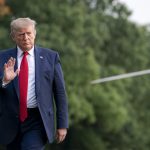Commerce Secretary Howard Lutnick recently spilled the beans that President Trump is about to shake up the electronics market with “semiconductor sectoral tariffs.” This news comes in the wake of the president’s infamous head-spinning tariff saga that has left Wall Street more jittery than a cat on a hot tin roof. Despite the chaos, administration officials insist that everything is going according to Trump’s master plan, proving once again that when it comes to trade, the law of unintended consequences reigns supreme.
Just when tech giants like Apple and Microsoft thought they had dodged a bullet with the exemption from the 145% tariffs on their products manufactured in China, they were hit with a curveball. These exemptions don’t mean they’re scot-free; instead, they’ll be included in the soon-to-be-introduced semiconductor tariffs. That’s right: your smartphones, laptops, and even those sleek televisions might soon have a hefty price tag thanks to this strategic maneuver. One can almost hear the collective groan from tech executives who now have to reroute their supply chains faster than you can say “national security.”
The administration is adamant that these measures, while seemingly complicated, are designed to ensure that America doesn’t rely on foreign nations—especially China—for essential tech products. After all, who wants to live in a country where their gadgets are produced by an adversary that doesn’t seem to mind using American companies as pawns in its political chess game? It’s almost poetic: Trump isn’t just raising tariffs; he’s positioning America on a path to manufacturing independence.
Trump administration officials say tariff reprieve on electronics is temporaryhttps://t.co/3UcBk2Aiyi pic.twitter.com/fYFukXjj0m
— The Washington Times (@WashTimes) April 14, 2025
The market’s rollercoaster ride continues, as Trump’s announcement of a 90-day pause on tariffs with nations other than China left everyone scratching their heads. Market analysts are left to wonder if these moves are calculated or just a wild guess. Whether it’s a strategic gamble or a knee-jerk reaction, one thing is clear: the administration is scrambling to keep both America and its economy afloat amid rising tensions and retaliatory tariffs from Beijing.
While the Trump administration projects confidence about the ongoing negotiations that might lead to new trade deals with countries like India and Britain, skepticism from some quarters remains. Trade adviser Peter Navarro seems optimistic but knows that dealing with China is like playing poker with a pair of deuces; it could go either way. The looming question is whether President Xi will play ball or double down on the anti-American rhetoric. After all, while the administration is pushing to solidify its trade policies, there’s an always-present risk that China might refuse to back down, turning this trade spat into an all-out war.
In contrast, Democrat critics claim that Trump’s haphazard approach is causing pain for American families. With rising costs and job fears taking center stage, it’s clear that the left is hoping to leverage the chaos to paint a dire picture of the Trump administration. However, it seems that the administration is banking on a solid manufacturing comeback that will eventually drown out the naysayers. It’s a high-stakes game of chicken that will require a mix of bold strategy and a dash of luck—a recipe that only the Trump administration could brew up.




